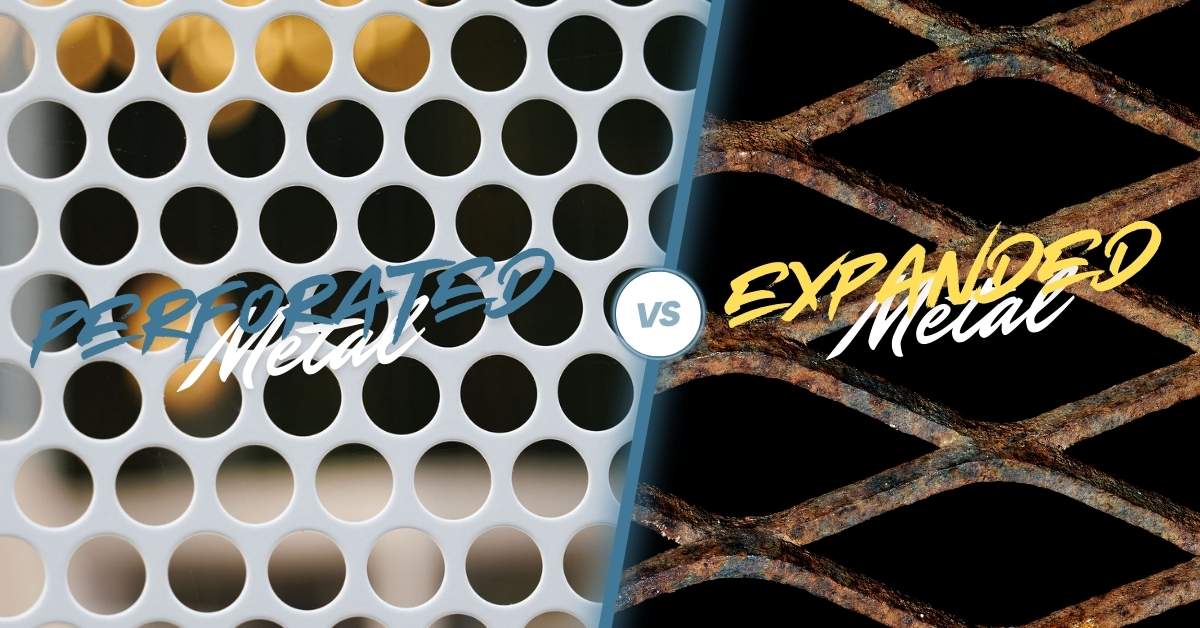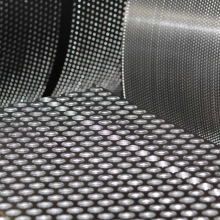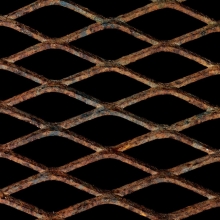
Perforated Metal vs. Expanded Metal is an age-old question with no clear-cut answer. While we are biased about which we think is best, we will briefly discuss which product to choose: perforated metal or expanded metal.
Key Differences
- Manufacturing Process
- Perforated Metal: Involves precise punching, allowing for a wide range of patterns and designs.
- Expanded Metal: Utilizes an expansion process that retains the metal’s structural integrity while creating an open mesh.
- Design Versatility vs. Structural Strength:
- Perforated Metal excels in decorative and precision applications, offering numerous design possibilities.
- Expanded Metal is favored for its robust load-bearing and safety-critical performance.
- Application Areas:
- Perforated Metal is well-suited for architectural elements, acoustic applications, and high-precision industrial components.
- Expanded Metal is the go-to solution for grating, walkways, and situations where strength and ventilation are paramount.
What Is Perforated Metal?

Around here, we joke that "we put holes in metal". And, at its core, that's correct. Perforated metal refers to a type of sheet metal or coil punched or stamped with a pattern of circles, squares, slots, or other shapes. These patterns can vary widely, from simple round holes to more decorative designs. Perforated metal is commonly used in various industries and applications due to its versatility and functional properties. It can be made from different materials such as steel, aluminum, stainless steel, copper, and others, depending on the application's specific requirements. Perforated metal finds use in areas like architectural design, filtration systems, acoustic panels, ventilation, screening, and decorative purposes. Its perforations allow for airflow, light transmission, sound absorption, and visual appeal while maintaining structural integrity.
Advantages of Perforated Sheet Metal
-
Customization: Perforated metal offers a wide range of hole sizes, shapes, and patterns, enabling tailored solutions for unique project requirements.
-
Aesthetics: Provides a sleek and modern appearance, enhancing the visual appeal of structures.
-
Functionality: Improves ventilation, light diffusion, and acoustic performance in various applications.

What is Expanded Metal?
Expanded metal is a type of sheet metal that has been slit and stretched to create a pattern of diamond-shaped openings. This stretching process produces a stronger, lighter, and more rigid material than the original sheet metal. Expanded metal can be made from various materials, such as steel, aluminum, and stainless steel. One of expanded metal's key features is its versatility. It can be used in multiple applications, including fencing, grating, walkways, platforms, security screens, HVAC grilles, and decorative elements. The diamond-shaped openings allow airflow, visibility, and drainage while providing structural support and security.
Why Choose Accurate Perforating?
Accurate Perforating distinguishes itself through a commitment to quality, customization, and customer satisfaction:
-
Expertise and Experience: With decades of experience, Accurate Perforating has honed its processes to deliver precise and reliable perforated metal products.
-
Customization Capabilities: The company offers a wide array of materials, patterns, and finishes, allowing clients to tailor products to their specific needs.
-
Quality Assurance: Adheres to stringent quality control measures, ensuring that each product meets the highest industry standards.
-
A Customer-Centric Approach focuses on building strong relationships with clients and providing support from the initial design phase through project completion.
Clients gain a trusted partner dedicated to delivering exceptional perforated metal solutions that elevate their projects' form and function by choosing Accurate Perforating. Check out our exclusive article to learn more about what perforated sheet metal manufacturers can do for you and your business. If you’d like to speak with us directly, we’re always here to help. Please send us a message below or call us at 1-800-621-0273.
Deciding Between Perforated Metal Vs Expanded Metal
This decision is an ongoing predicament that many product designers, architects, and manufacturers are faced with today.
Far too often, we hear that price solely determines many buyers’ selection process between the three. Price should be a factor when choosing one, but shouldn’t the selection of perforated, expanded, or wire also be about the application, the intended function, and the best product for the job? When comparing the three's capabilities across various areas, perforated metal exceeds expanded and wire in meeting many of those requirements. However, while perforated metal does offer a vast array of functionality, expanded metal or expanded mesh uses less scrap and may be more economical in some cases. A significant advantage of perforated metal is that it is typically stocked in a larger variety of hole patterns, materials, and gauges.
The chart below compares the functional capabilities of these three product types. It is from the Industrial Perforators Association (IPA) handbook.
This information should help you make the most logical decision regarding the material for your next product or project.
|